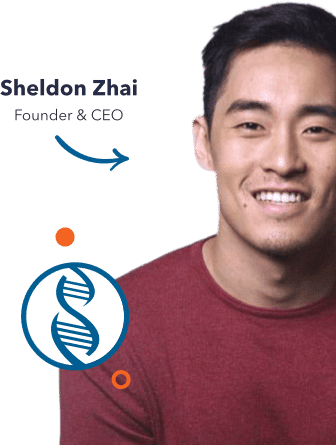Conversion Optimization
5 Minutes
Accessing Marketplace Sophistication
Video Transcription
5 STAGES OF MARKETPLACE AWARENESS
When it comes to building a website and creating a digital marketing campaign, oftentimes we think about the wrong things.
Often times, I’ll see marketers starting with something along the lines of, “How do we increase brand awareness?” That’s kind of the thought process. And, what happens there is that we end up sending a lot of traffic to something that isn’t necessarily resonating, therefore, wasting a lot of money – the black hole of the Internet marketing world.
A much more intelligent place to start, instead of thinking about brand awareness, is thinking about marketplace awareness. So asking the question, not “How do I make people aware of my brand?” but, “What are people already aware of?”
So, the benefit here and the point of understanding where your market is at in terms of sophistication, it will allow you to align your messaging with the stage that they’re at. This will lead to increased engagements on your website. It will resonate more and therefore, people will interact with it more. And, as a result from there, you will get better organic rankings in Google. Ultimately, leading to more qualified, more engaged traffic, higher conversions, more sales and less ad spent on traffic that isn’t doing anything for you.
In this video, we’re gonna talk about the Five Stages of Marketplace Awareness. We’re gonna go through an example given by an expert marketer, Todd Brown.
Todd Brown is also a student of the late, great, Eugene Schwartz, one of the most revered and notable admen of all times. He was notable for understanding and differentiating the stages of marketplace awareness.
So, the example that we’re going to use here is of the supplement and weight loss market. Now, why is that? It’s because that is one of the most highly competitive industries in the world. It’s important to understand how messaging changes in highly competitive fields, as marketplace awareness changes with it.
As we go through this example, I want you to think about, “Where is my market in terms of marketplace sophistication?”, and also, “Where is my messaging, in terms of lining up, with that marketplace sophistication?” Is it actually accurate, or is it different? And this is something that will change over time, it’s something to be aware of in the future, that you will have to adapt to the marketplace sophistication. So, in the first stage, it’s simply
1) Offer + Benefit. Example of that is, “Take this pill and lose weight.”
Now, if we were to use that kind of messaging angle today, we’d be destroyed in this market. It’s too simple, and people just flat out wouldn’t believe you. At some point, weight loss supplements didn’t exist, and this was a claim that could work perfectly fine. This would be a mind-blowing, revolutionary claim. Take this pill and lose weight? That’s incredible! Now, I’d say, people would not trust you.
So, what happens when there’s more competitors that are moving into your space and are making the same promises, is that you have to…
2) Expand on the Benefit
In Stage 2, expanding on the benefit is “Take this pill and lose 15 pounds.” So now, we’re not just losing weight, we’re expanding on the benefit and specifying it. Giving it parameters. Making it more believable. Once the competition has made similar claims, to an extent that people aren’t believing you anymore, now is when we’re moving to…
3) Expand the Offer Using Unique Mechanism
This is the breaking point that a lot of marketing falls down on. But, if you can master going from Stage 2 to Stage 3, your marketing efforts will have breakthrough results. In Stage 3, we’re expanding on the offer, using what is known as a “Unique Mechanism”. Example of that is, “Take this pill with Garcinia Cambogia to prevent the absorption of fat, so you can lose weight more rapidly!” Where is the Unique Mechanism here? It’s the Garcinia Cambogia – it’s what is producing the end result. Once your competition is using the same products of that same Unique Mechanism, we move into the Stage 4:
4) Differentiate the Unique Mechanism + Expand the Benefit
Example here would be, “Take this pill with pharmaceutical grade Garcinia Cambogia, and lose 20 pounds in 20 days!” The expansion of Garcinia is the pharmaceutical grade. This isn’t just Garcinia Cambogia anymore, this is pharmaceutical grade, therefore, that is what is producing the end specified results.
Now, once your marketplace has gotten to a point that it is so overwhelming, so inadated with promises, it moves into…
5) Reverse the Question
Only the very highly competitive markets move all the way into Stage 5. What Reverse the Question sounds like is, “Tired of taking fat burning supplements and not losing weight?” People who have been overly promised something will believe you no matter what you say; no matter how far you expand on the mechanism, no matter what kind of crazy, wild promises you make. Then, you flip the question. Say, “Are you tired of taking something that doesn’t work and not getting the results promised? Well, now there’s something new.”
What I’d like you to consider is, as you go through these, where is your marketplace? In terms of your competition, what other promises are being made? Are they simply making Offer + Benefit, which most marketing still is even though marketplace sophistication is always changing. Oftentimes, marketing is still stuck in the Stage 1.
But, where is your market actually? Are they in Stage 2? Are any of your competitors making the promises? Are any of your competitors using the Unique Mechanism that explains why the results are produced? If they are, then you need one as well. If it’s similar to yours, then you need to further differentiate.
In this video, we walked through the Five Stages of Marketplace Sophistication. I’d encourage you to try and think about,"Where is my market vs where is my messaging? Are they aligned or not?”
One of the questions that comes up is, What if I don’t have a Unique Mechanism?” Sometimes, the Unique Mechanism is clear in the product itself. If it’s a new, novel product, the Unique Mechanism is apparent. But what if you are selling a commodity? What if nothing is clearly different about your product or service?
That’s what we’re gonna discuss in the next video – How to Define a Unique Mechanism When There Isn’t One Apparent.
Thanks for watching! In the next video, I look forward to going further with you.




